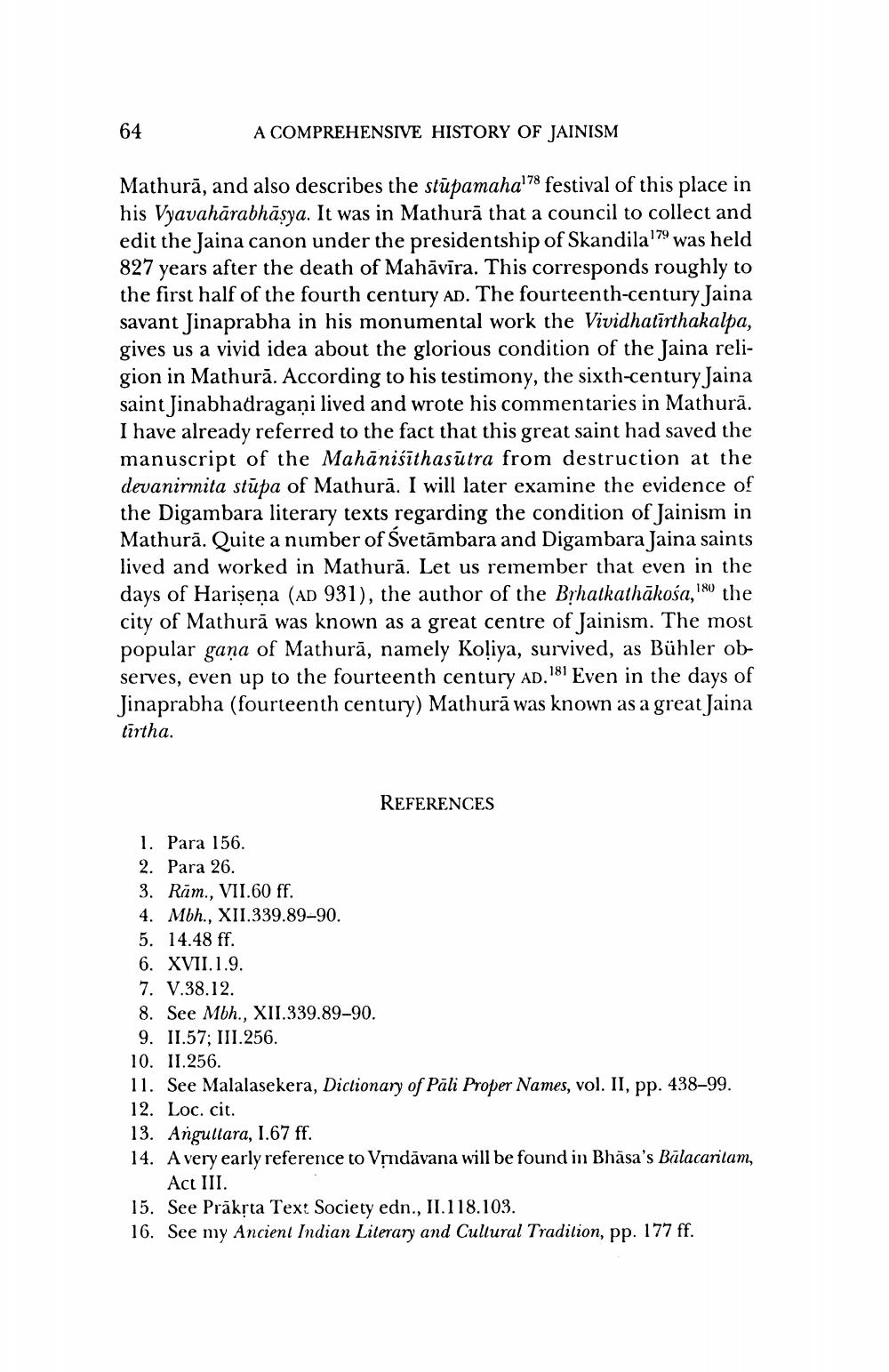________________
64
A COMPREHENSIVE HISTORY OF JAINISM
Mathurā, and also describes the stūpamahal78 festival of this place in his Vyavahārabhāsya. It was in Mathurā that a council to collect and edit the Jaina canon under the presidentship of Skandila 179 was held 827 years after the death of Mahāvīra. This corresponds roughly to the first half of the fourth century AD. The fourteenth-century Jaina savant Jinaprabha in his monumental work the Vividhatīrthakalpa, gives us a vivid idea about the glorious condition of the Jaina religion in Mathurā. According to his testimony, the sixth-century Jaina saint Jinabhadragani lived and wrote his commentaries in Mathurā. I have already referred to the fact that this great saint had saved the manuscript of the Mahānisithasūtra from destruction at the devanirmita stūpa of Mathurā. I will later examine the evidence of the Digambara literary texts regarding the condition of Jainism in Mathurā. Quite a number of Svetāmbara and Digambara Jaina saints lived and worked in Mathură. Let us remember that even in the days of Harișeņa (AD 931), the author of the Byhatkathākoša, '80 the city of Mathurā was known as a great centre of Jainism. The most popular gaņa of Mathurā, namely Koliya, survived, as Bühler observes, even up to the fourteenth century AD. 181 Even in the days of Jinaprabha (fourteenth century) Mathurā was known as a great Jaina tirtha.
REFERENCES
1. Para 156. 2. Para 26. 3. Rām., VII.60 ff. 4. Mbh., XII.339.89-90. 5. 14.48 ff. 6. XVII.1.9. 7. V.38.12. 8. See Mbh., XII.339.89-90. 9. 11.57; III. 256. 10. II. 256. 11. See Malalasekera, Dictionary of Pāli Proper Names, vol. II, pp. 438-99. 12. Loc. cit. 13. Angullara, 1.67 ff. 14. A very early reference to Vrndāvana will be found in Bhäsa's Būlacarilam,
Act III. 15. See Prākta Text Society edn., II.118.103. 16. See my Ancient Indian Literary and Cultural Tradition, pp. 177 ff.




